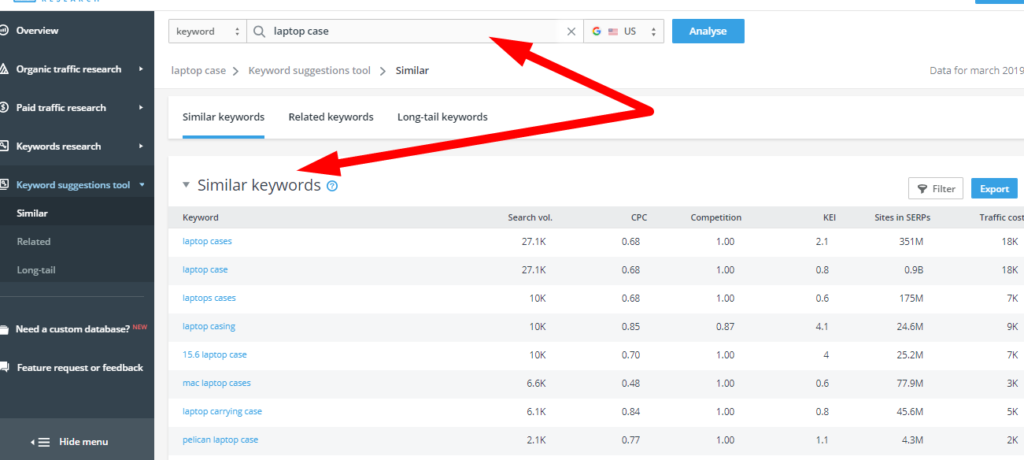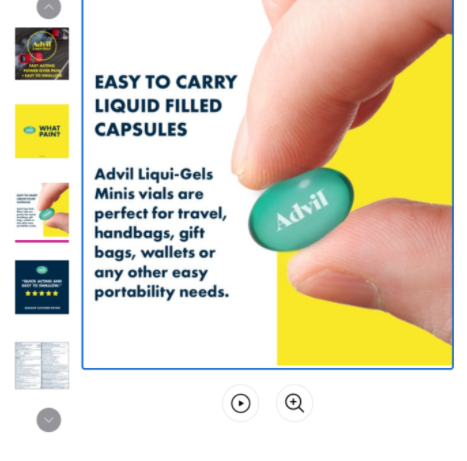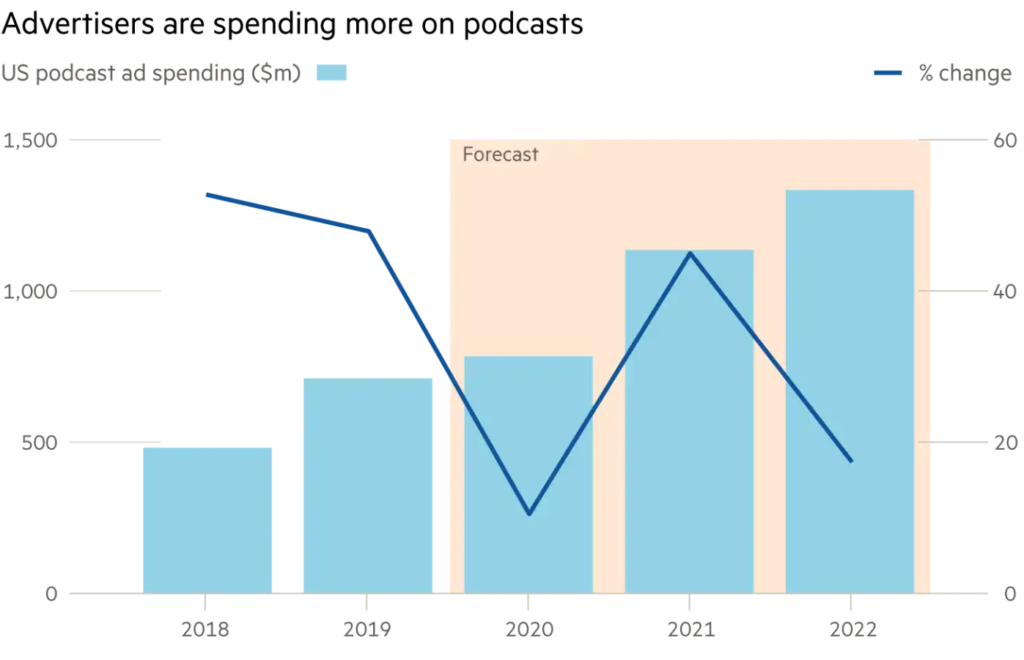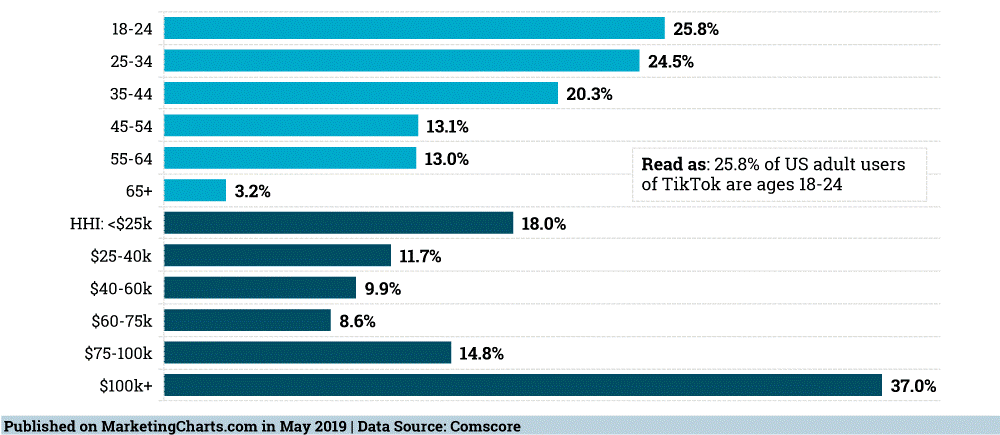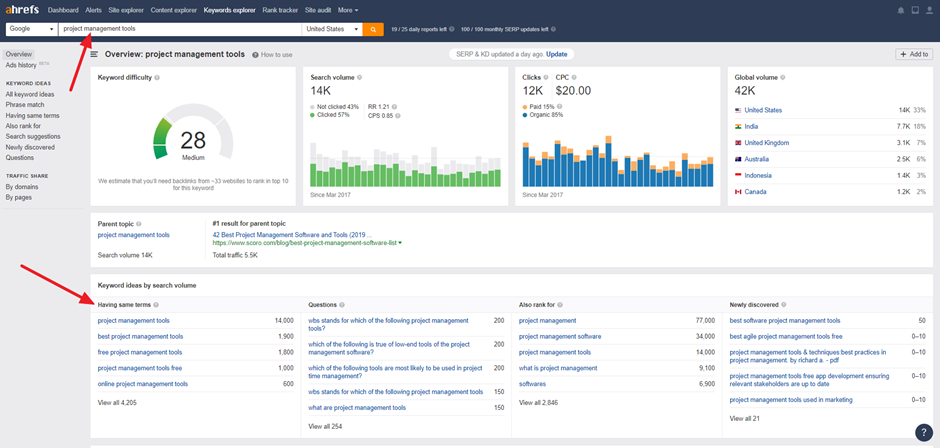Optimizing for both search engines and users is one of the most important things you can do for your content. However, creating SEO friendly content often requires time and efforts. Following recent knowledge of search engine algorithms, it is now obvious that well-optimized, high-quality content essentially improves your chances of ranking higher in search results.
While organic traffic helps to build your site’s reputation with both users and search engines like Google, quality content writing is the basis on which this is formed. To help you get your content ranking better in search engines, here are tips to follow:
Start by conducting keyword research
The foundation of successful organic content writing and distribution is keyword research. While keywords are not just about search engine optimization (SEO), they help to discover the audience’s interest and hence, enable you to learn specific questions on topics your content will answer.
Finding the right keywords is important as it helps you dominate the search results and satisfy your target audience. Here are
Useful sources to perform keyword research for your SEO friendly content
- Use tools like SE Ranking Keyword Suggestion tool, AnswerThePublic, or Google Keyword Planner to find the best keywords.
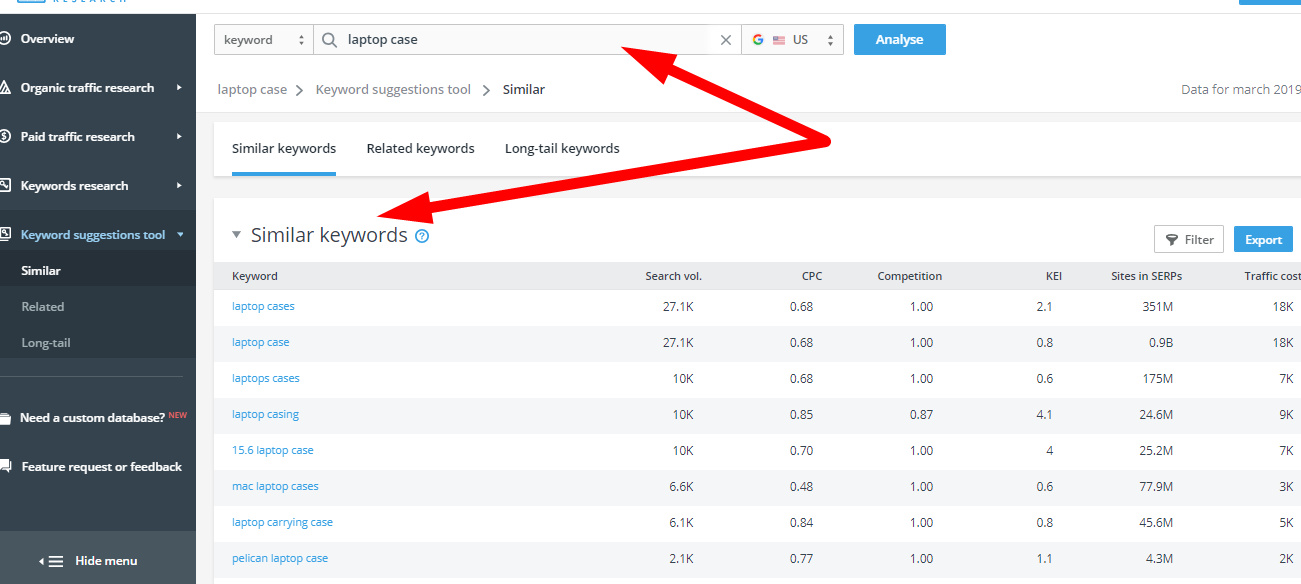 Source: Google Keyword Planner
Source: Google Keyword Planner - Generate new variations of your target keywords using Quora.
- Use Related Searches on Google to learn more about your customers and what their intent is.
- Search for topic-specific pages on Wikipedia as it ranks very high in search engine research page (SERP).
- Find keyword ideas on SEMrush and Amazon. It has total domination of the organic search results for any transactional keywords.
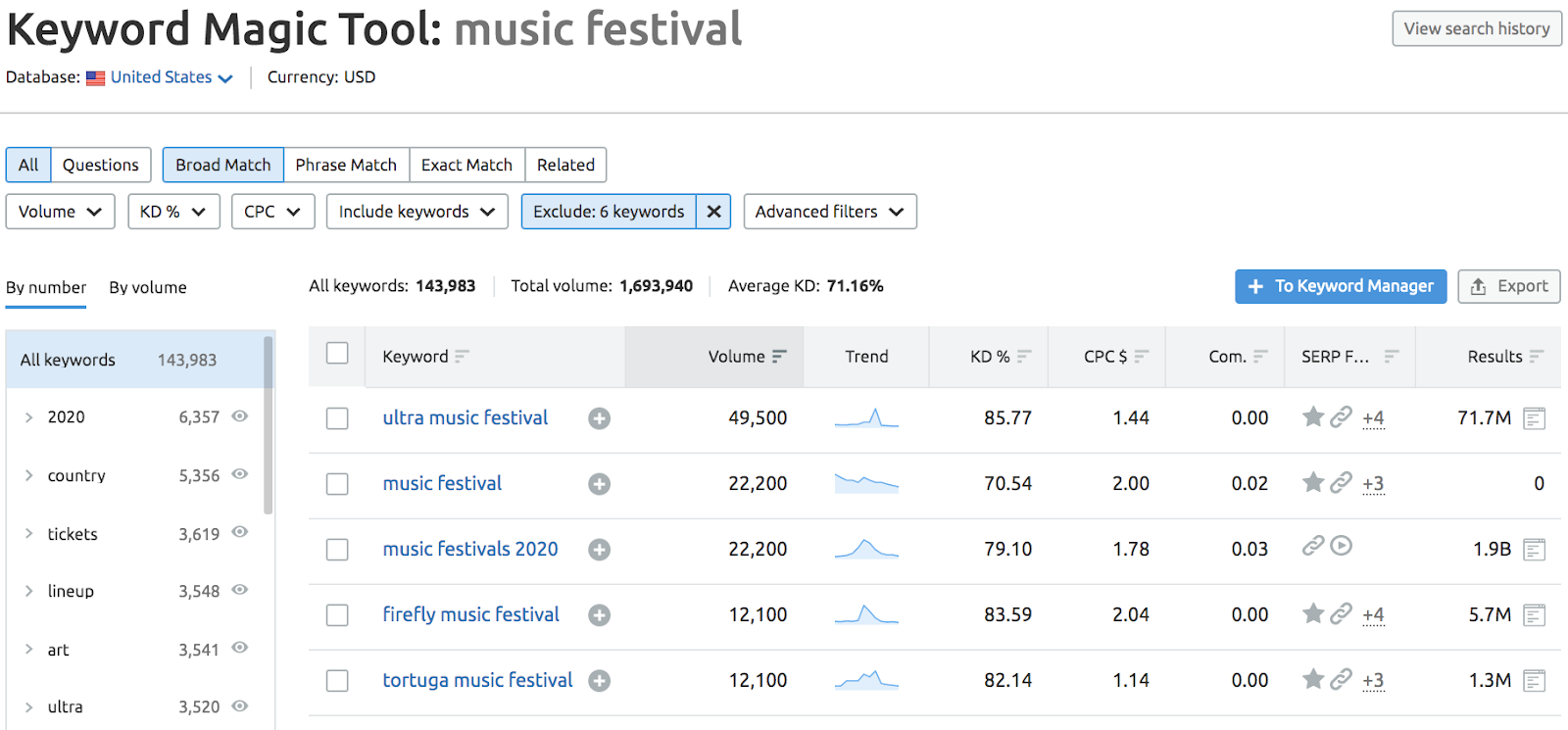
 Source: SEMrushAfter generating these keywords and you’ve started writing, avoid their overuse so as not to ruin the readability of your content.
Source: SEMrushAfter generating these keywords and you’ve started writing, avoid their overuse so as not to ruin the readability of your content.
Determine search intent and structure your content.
Although all great contents are based on solid structures (introduction, main body, and conclusion), their success relies primarily on fulfilling the search intent of the user. Therefore, from the chosen content structure to the message of the content and the call-to-action (CTA), all should depend on the search intent for a keyword.
From the user’s standpoint, these search intents could be commercial, navigational, informational, and transactional. You may also want to type your keyword into the Google search bar to check for any SERP features that can help with identifying the keyword type.
After taking into consideration of the search intent and keyword type, you can now settle for the best-suited structure for your content. Bearing in mind that good structure is an essential element of high-quality content; ensure to use subheadings because they make your content scannable and therefore easier to read. According to a study by SEMrush, 36% of articles with H2+H3 tags have higher performance in terms of traffic, shares, and backlinks.
Write catchy titles
Your article’s headline is not necessarily the title that will be shown in search results; however, titles have a huge impact on your SEO strategy and user-friendliness. Consequently, descriptive and appealing titles can help readers tell what your blog post is about, and what they will get from reading it.
To increase your chances of a high ranking page and click-through-rate (CTR), optimize your titles to be SEO-friendly by:
- Using your target keyword at the beginning of your title.
- Employ emotive words like ‘best’, ‘amazing’, ‘funny’, ‘free’, ‘surprising’ and explanatory words like ‘how’, ‘why’, ‘what’, and ‘where’, in your title.
- Keep your title under 60 characters because Google displays the first 60 characters in the search results.
- Ensure an accurate description of the post’s content through your knowledge of the user’s intent.
Also, to find resonating headlines with the highest backlinks and social engagement, SEMrush’s Topic Research can help you.
Optimize meta descriptions
This is a summary of the content that Google uses to show beneath your title in the search results. It is important to make it appealing and informative to encourage readers to click your blog post. The meta description should explain what your article is about and include your target keywords. The meta description length is between 155-160 characters.
While there are no guarantees that the original meta description you’ve painstakingly written will appear in the search results, it best you include your target keyword in your meta description, you never know when Google will tag you.
Use SEO-friendly URLs
According to Backlinko, URLs are a significant ranking factor. They provide a better user experience (UX) and are easier to share. When it comes to creating SEO friendly URLs, use the following rules:
- Include the target keyword for each page. That will improve the search visibility of your website and help search engines better categorize and identify the page.
- Shorten your URLs by removing unnecessary words. The average URL should be around 60 characters or three to five words.
- Use hyphens (-) to separate words instead of underscores (_).
- Use lowercase letters. Uppercase letters can result in redirects or 404 errors on some servers.
- Avoid stop words, such as a, an, but, and or.
- Keep your URLs simple, compelling, and relevant.
Use small paragraphs
Keep your paragraphs short (about 2-3 sentences). While it doesn’t mean that each sentence needs to start on a new line, ensure the paragraphs are arranged logically, and have their own idea.
You can use different formatting options, such as adding bullet points, highlighting text, and changing your font. All these make your content less boring and easier for mobile users to read.
Add visual content and optimize images
A great way to effectively get your points across and improve the reader’s experience is by including visuals and optimizing images in your content. Since Google Images can’t read the text in images, you need to give your images proper Alt text and descriptive titles, captions, and filenames.
To make it SEO-friendly, try to create useful and informative content that contains your core keywords appropriately and naturally in your ALT text. Here is the example of an ALT text for an image: <img src=”lady.jpg” alt=” Lady walking on the road”/>
Relatedly, having different visuals across a page not only help to better convey information to the user. Therefore, the of use infographics, checklists, templates, and other types of visual content help to deliver value to your audience faster and in a more catchy way. The more useful, interesting, and relevant the content is, the more backlinks you are likely to get. Backlinks from authoritative websites make your content trustworthy for Google. Thus, the search engine ranks it higher.
Build Internal Links
Adding links for further clarification to your blog posts or articles is very important. They help your readers explore a topic in more depth while staying focused on the main point. While external links are those that point from a site to any site other than the domain the link exists on, internal links are those that point from one page to another on your website.
Generally speaking, internal linking is an effective way for search engines to recognizes the relevance of your content, make your readers spend more time on your site, and reduce the bounce rate. As a result, linking out to useful external resources like Wikipedia and Encyclopædia Britannica will build trust and improve user experience (UX).
Also, as shown in the screenshot below, conducting an audit of existing content with SEMrush’s Site Audit tool will help you understand which topics your content covers and which ones it doesn’t.

Source: SEMrush
While adjusting your interlinks, it is important you optimize your links by building an internal linking strategy. This can be done by creating topic clusters, hub pages, and anchor text using internal links.
Use the optimal content lengths
For a typical blog post, the minimum word count should be between 300 to 500 words. This is because Google prefers longer content as it tends to get more likes and mentions on social media. For that reason, longer posts with an optimal content length of around 2000 words have good chances of ranking better in the search.
However, writing content of about 2000 words shouldn’t be your primary goal every time. First and foremost, you need to provide your readers with the most useful and informative content determined by their search intent. Quality is more important than quantity and as such, always check out your top-ranking content to see what articles get the most views and analyze the impact of content length.
Optimize your content for mobile
According to Statista, accounts for approximately half of the web traffic globally. To be relevant, it has become compulsory that you optimize your content for mobile devices because search engines like Google and Bing now rank mobile-friendly websites higher.
It is, therefore, necessary to have a responsive website design as Google penalizes non-mobile-friendly sites.
Update your content regularly
Regardless of the compelling and high-converting content you publish your site needs to be updated on a regular basis. This is because search engines like Google provide searchers the best results for their search queries.
Consequently, if you don’t publish regularly, your site will likely not be considered as a good resource for searchers by search engines.
Use social media share buttons
To make it easier for users to discover your social share buttons and spread your content around the web. Conspicuous and beautifully designed buttons will encourage internet surfer to click and share your content.
Include schema markup
Implementing schema markup will help search engines better analyze your content. It divides each part of your publications and explains to search engines what these parts mean.
Use Google’s Structured Data Markup Helper to add markup to your blog posts easily. For example, if you want to add schema markup to your title, choose the right section ‘Articles’, enter the URL and start tagging.

